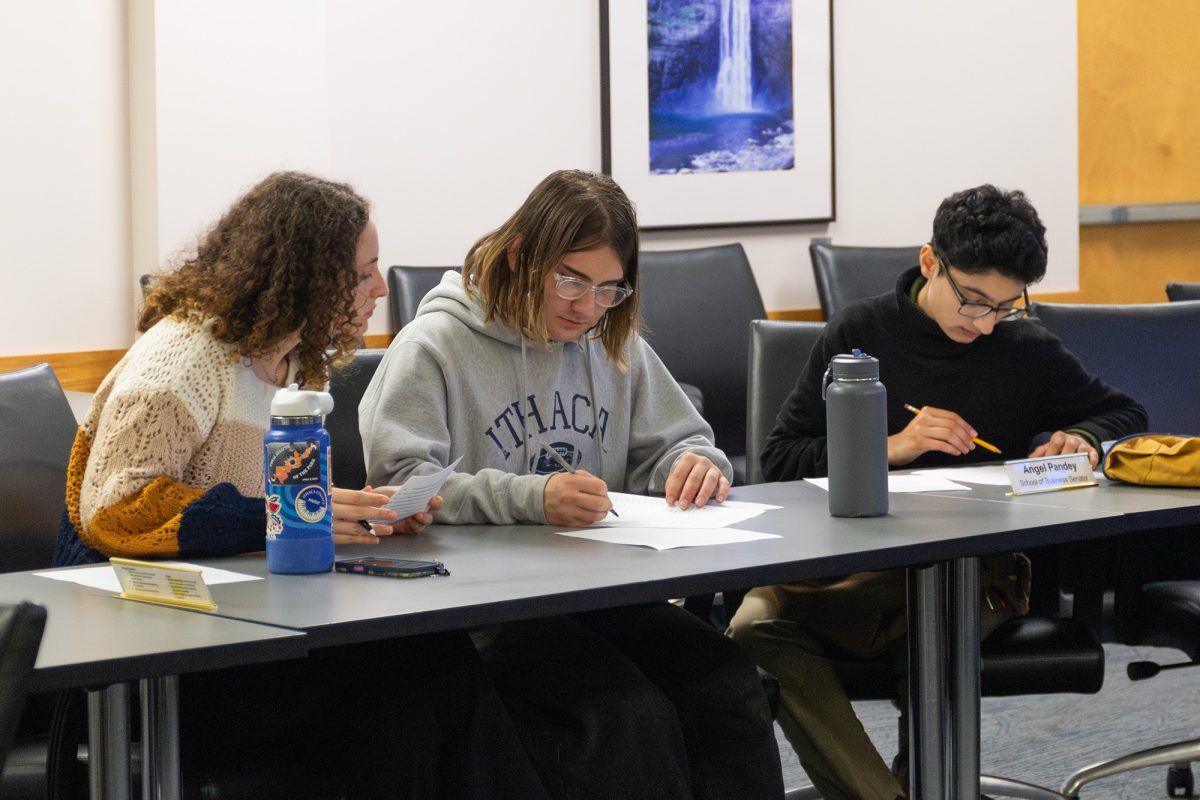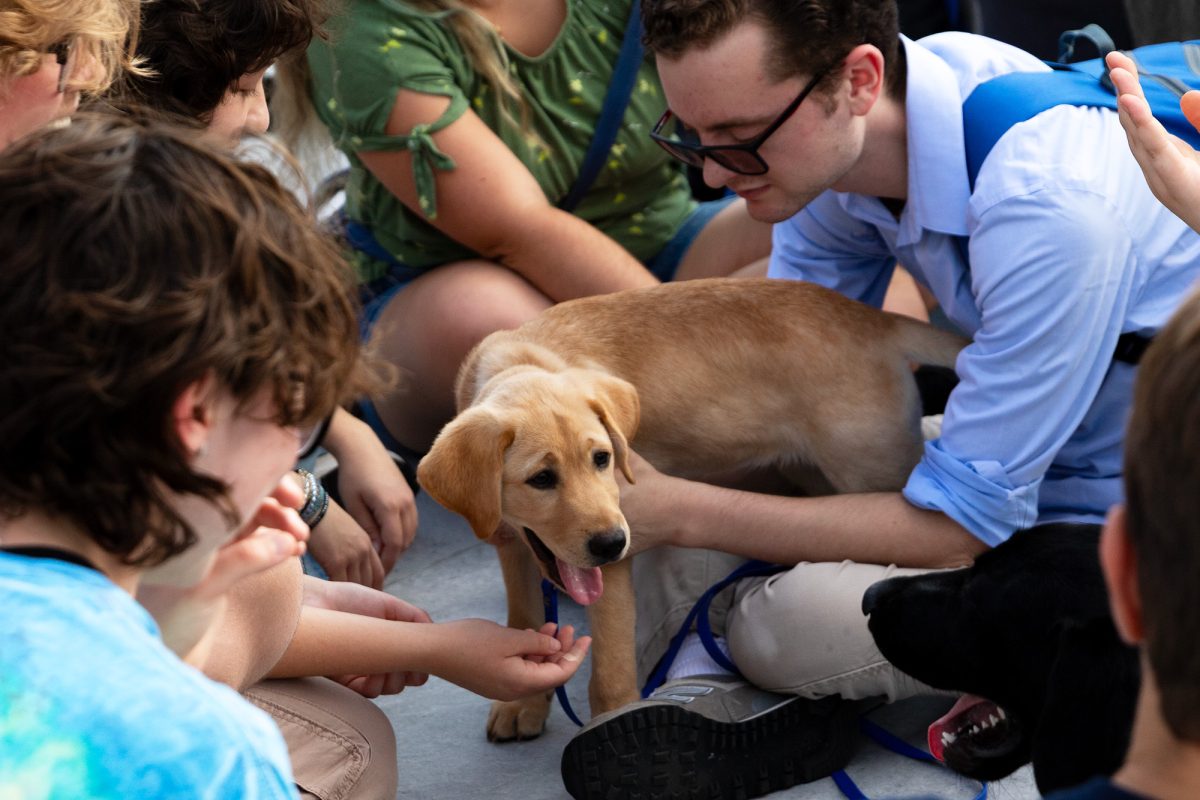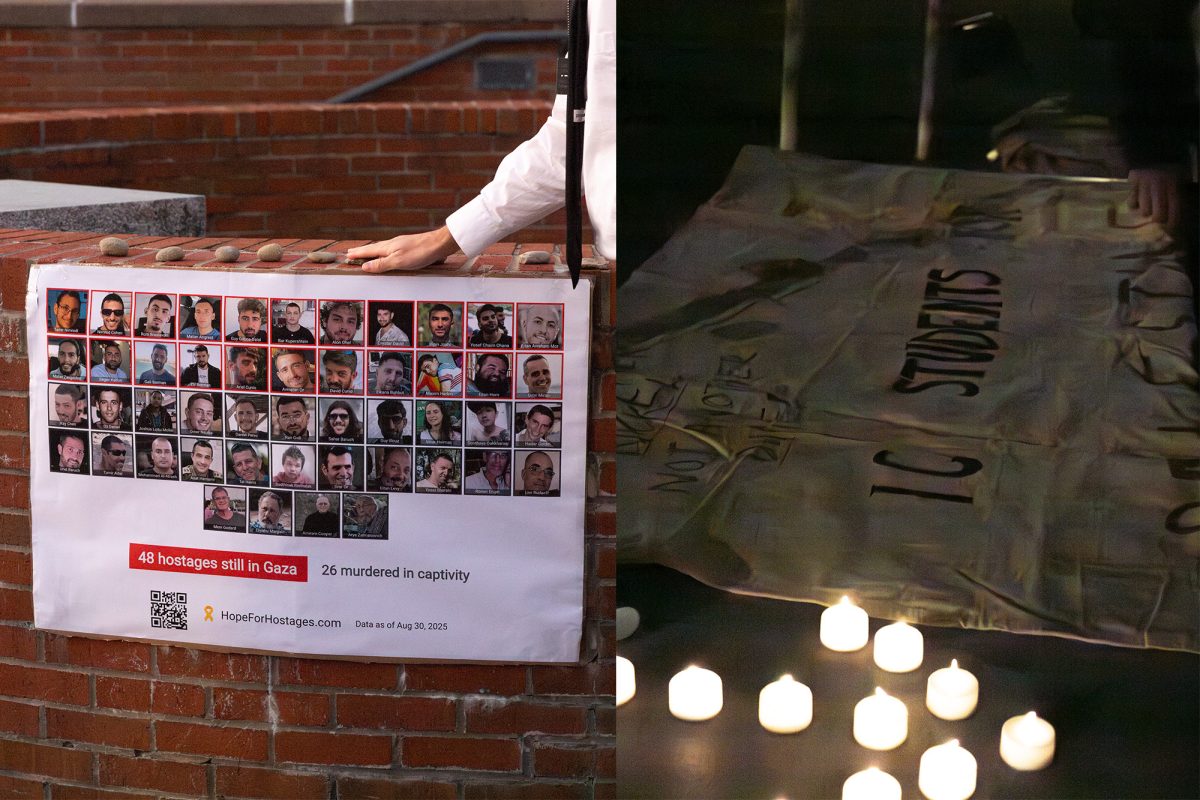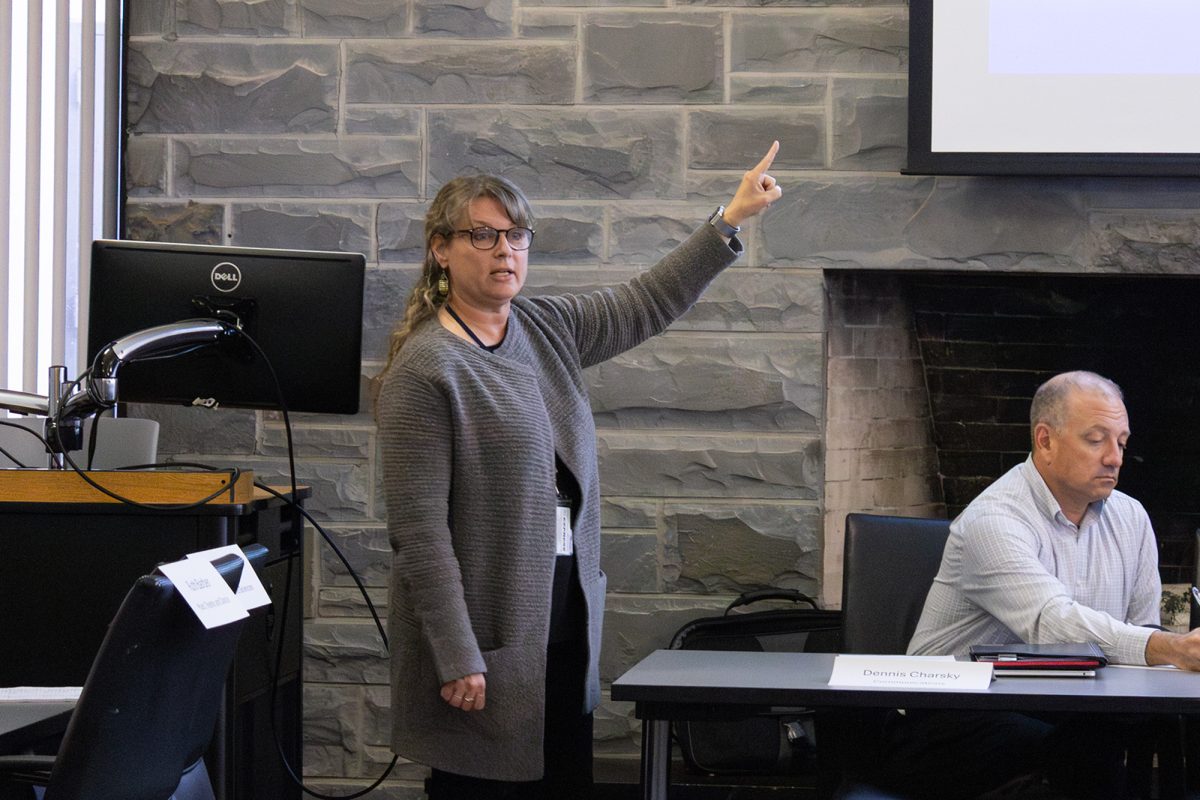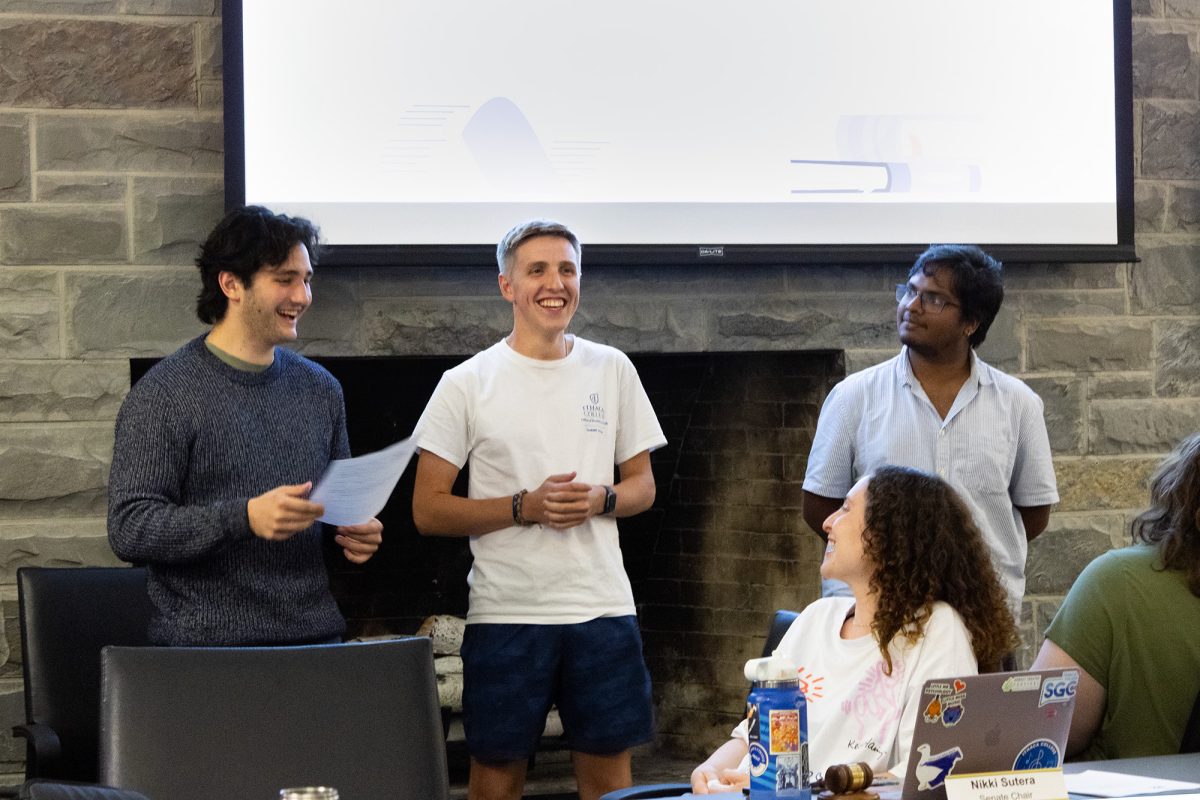Employees in the Peggy Ryan Williams Center have discovered new neighbors — a pair of red-tailed hawks.
John Confer, scholar-in-residence in the Department of Biology, said the hawks nested on the roof of the north side of the Williams Center in mid-March.
Red-tailed hawks are not a rare species in New York state, but their nesting presence in a human setting is unusual.
Confer said this is the first time he has seen hawks nest on the college’s campus.
“It’s interesting timing that in the 40 years that I’ve been around here, there has never been a red-tailed hawk nest on this campus,” Confer said. “It’s kind of cool.”
According to The Birds of North America Online, a site run by the Cornell lab of Ornithology, red-tailed hawks, known in the science world as Buteo jamaicensis, have a global population of 2 million. Their territorial range is most often open areas laden with patches of trees or things with a similar structure, like the campus buildings.
Tim Hauck, a field biologist and project coordinator for the Department of Biology at the college, said the hawks chose a perfect place to nest, in terms of its approachability by predators.
“It’s really inaccessible to any predator, except for a crow,” Hauck said.
Confer said their ability to stay on the campus to nest is aided by the amounts of shrubbery and low vegetation, where prey, like snakes, squirrels and rabbits hide.
The two hawks have become accepted residents at the Williams Center. Some employees in the offices have already come up with nicknames for them. Hauck said the hawks will probably stay for more than a month, until the four or five eggs protected by “Peggy” hatch and are able to leave the nest. According to The Birds of North America Online, they lay their eggs in mid-March, and after an incubation period of about 28 days, the young stay in the nest for about 44 days.
Hauck said he doesn’t foresee the hawks creating problems for the campus community.
“I don’t think the hawks will pose any problems with the people,” he said. “I think they’ve nested there for good reason.”
Emma Hileman, a junior environmental studies major, said having the hawks nest on a campus is a great experience for the college community.
“It is great to have a pair of red-tailed hawks on our campus because it gives the campus community a chance to see some wildlife that they normally wouldn’t get to on our campus,” Hileman said.
Confer said the hawks’ presence is a learning experience.
“The most important thing is trying to find a way that humans […] can allow wildlife to coexist,” he said. “If we can live and do all the things that humans are usually doing and have wildlife around at the same time, that’s a pretty nice balance.”


